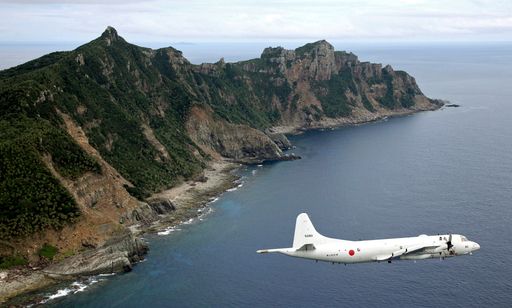Tensions between Japan and China escalated this week after Tokyo accused Chinese fighter jets of flying “unusually close” to a Japanese patrol aircraft over the Pacific, prompting formal protests.
In response, Beijing criticised Japan’s recent long-range missile tests, warning that Tokyo’s growing military capabilities threaten regional stability and violate the spirit of its pacifist constitution.
Tokyo has said it had expressed serious concerns to Beijing after Chinese fighter jets flew "unusually close" to a Japanese military patrol plane in the Pacific last weekend.
The incident followed the sighting of two Chinese aircraft carriers sailing in the Pacific simultaneously for the first time, including in Japan's economic waters on Thursday.
Japan said this week that the aircraft carriers' activity described by China as "routine training" showed the expanding geographic scope of Beijing's military.
A Japanese defence ministry spokesman told on Thursday that Chinese fighter jets had flown "unusually close" to the Japanese patrol plane.
On Saturday, a Chinese J-15 fighter jet from the Shandong aircraft carrier followed a Japanese P-3C patrol plane for 40 minutes, then on Sunday two J-15 jets did the same for 80 minutes, the spokesman said.
"During these long periods, the jets flew unusually close to the P-3C, and they flew within 45 metres" of the patrol plane at the same altitude on both days, he said.
On Sunday, the Chinese jets cut across airspace around 900 metres in front of the Japanese patrol plane a distance that a P-3C can reach within a few seconds at cruising speed, the spokesman added.
"Such abnormal approaches can lead to an accidental collision, so we have expressed serious concerns" to the Chinese side, including Beijing's ambassador in Japan Wu Jianghao, and asked them to prevent a repeat, top government spokesman Yoshimasa Hayashi told reporters.
"The government will continue communicating with the Chinese side at various levels, while doing its best to patrol and monitor airspace around our country in order to defend Japan's territorial soil, waters and airspace," he said.

US-China economic tensions
Japanese military personnel had not been injured, the defence ministry said in a statement.
Similar incidents were last reported over a decade ago in May and June 2014, when Chinese Su-27 fighter jets flew within 30 metres (100 feet) of Japan's military planes in the East China Sea.
At the time Japan summoned the Chinese ambassador while the two sides traded accusations of blame.
Daisuke Kawai, director of the University of Tokyo's economic security and policy innovation program, told AFP earlier this week that the timing of the aircraft carrier movements could be linked to US-China economic tensions.
"Beijing calculated that the United States would be less willing or able to respond militarily at this precise moment, seeing it as an opportune time to demonstrate its expanding military capabilities," he said.

Japan’s long-range missile
China has said that Japan’s testing of new Type 12 surface-to-ship missiles was “breaking the restrictions of the pacifist constitution that the Japanese Self-Defense Forces cannot possess offensive weapons.”
A commentary in the military newspaper the People’s Liberation Army Daily said the increased missile range would serve as “a real deterrent to multiple surrounding areas,” the South China Morning Post reported on Wednesday.
Japan’s pacifist constitution was established following its defeat in World War II. The missiles were tested during an annual live-fire exercise near Mount Fuji on Sunday.
According to Japanese media reports, the upgraded Type 12 surface-to-ship missiles and the hypersonic Hyper Velocity Gliding Projectile (HVGP) will be deployed in Kyushu, Japan’s southernmost main island, while the HVGP may also be stationed in Hokkaido in the north.
“In fact, rather than enhancing its defence capabilities, Japan has been leaping toward ‘first strike capabilities’ in the name of building so-called ‘counter strike capabilities’,” the PLA Daily said, criticising Japan’s military buildup.
The new Type 12 surface-to-ship missiles have an approximate range of 1,000 kilometres (621 miles) and the HVGP Block 1 can reach 900 kilometres (559 miles) while traveling at speeds exceeding Mach 5.
Japan, which has been following a pacifist post-World War II constitution since 1947, had long capped its defense budget at around 1% of its GDP, or around 5 trillion yen ($33.5 billion). But in recent years, it has raised the defense budget toward a goal of 2 percent of GDP in 2027 amid growing security challenges posed by China and North Korea.




















